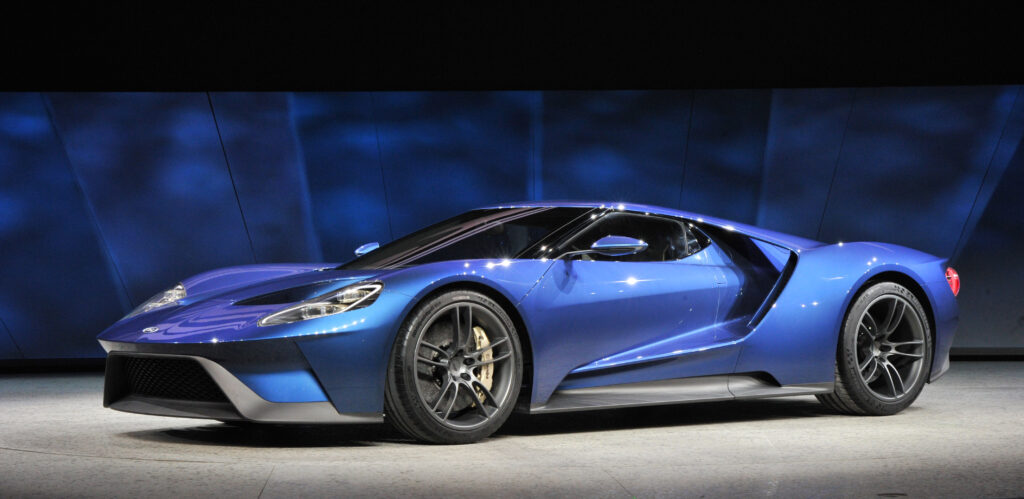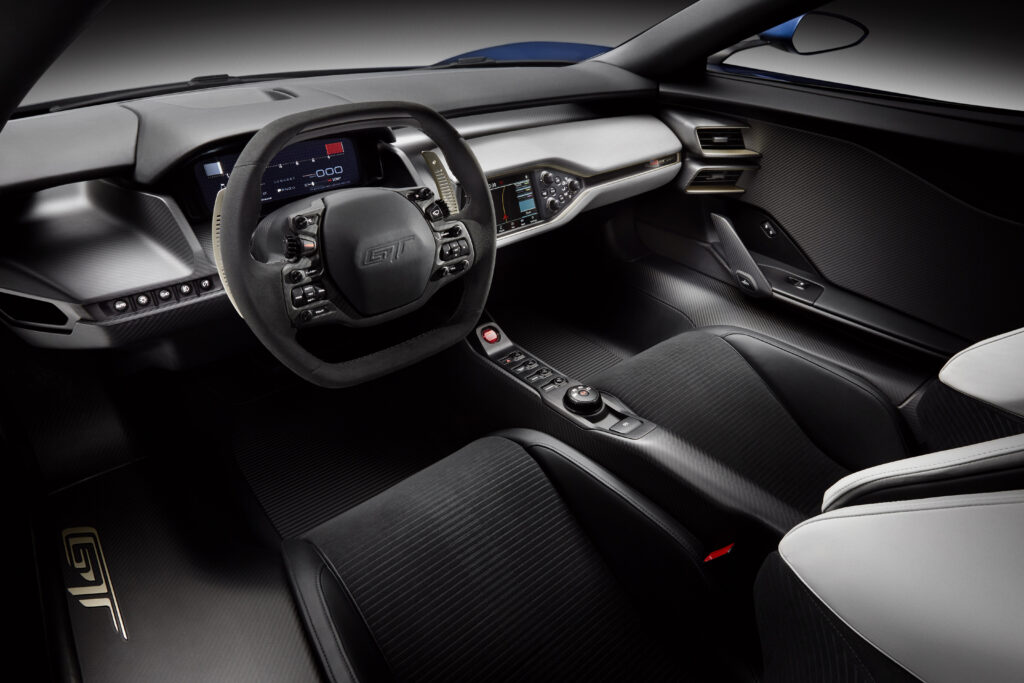In the ever-evolving world of high-performance automotive engineering, few moments have captured the imagination of enthusiasts, quite like the 2014 unveiling of the Ford GT. A fusion of cutting-edge technology, aerodynamics, and lightweight materials, the all-new GT signaled Ford’s commitment to innovation while paying homage to the legendary GT40 that dominated Le Mans in the 1960s.

A Supercar with Racing DNA
Ford’s announcement of the GT came as part of a larger push toward performance excellence, with more than 12 high-performance models slated for production by 2020. Among these, the GT stood out—not just as a road-going supercar, but as a statement of intent. Joining the ranks of the Focus RS, F-150 Raptor, and Shelby GT350, the GT reasserted Ford’s dominance in the high-performance sector.
Designed to celebrate the 50th anniversary of Ford’s historic 1-2-3 finish at Le Mans in 1966, the GT was more than just a tribute; it was a technological marvel poised to compete with the best in the world. Its aerodynamic, mid-engine layout was engineered for both speed and efficiency, blending classic design cues with modern innovation.

Ford GT: Pushing the Boundaries of EcoBoost Power
At the heart of the GT was the most potent iteration of Ford’s EcoBoost technology—a next-generation, twin-turbocharged 3.5-liter V6 producing over 600 horsepower. Based on the race-proven engine architecture used in Ford’s IMSA Daytona Prototype endurance racers, the GT’s powerplant delivered a wide powerband, rapid throttle response, and exceptional efficiency.
This twin-turbocharged EcoBoost V6 was paired with a seven-speed dual-clutch transaxle, ensuring lightning-fast gear shifts and an unparalleled connection between driver and machine. The direct and port fuel injection system enhanced combustion efficiency, while a roller-finger-follower valvetrain reduced friction, maximizing performance output.
The engine’s racing pedigree was undeniable—Ford’s EcoBoost V6 had already notched three victories in its first season in the IMSA TUDOR United SportsCar Championship, including a win at the prestigious 12 Hours of Sebring. This motorsport-derived powertrain was engineered not just for raw speed, but for the kind of endurance that wins races.

Carbon Fiber: The Key to Lightweight Dominance
Weight reduction has long been the holy grail of performance engineering, and Ford took this philosophy to the next level with the Ford GT. The extensive use of carbon fiber and aluminum helped the GT achieve one of the best power-to-weight ratios in its class.
The foundation of the car was a carbon fiber passenger cell, reinforced with aluminum front and rear subframes. This innovative combination provided a rigid yet lightweight chassis, enabling superior handling, acceleration, and braking performance. Structural carbon fiber body panels further enhanced aerodynamic efficiency while ensuring strength and durability.
By incorporating these advanced materials, Ford demonstrated its commitment to bringing race-derived technology to the streets, setting a precedent for future high-performance vehicles across its lineup.

Active Aerodynamics: Function Meets Form
Aerodynamics played a pivotal role in the GT’s design, with every surface meticulously crafted to optimize airflow, downforce, and stability. The car’s sleek teardrop shape, inspired by aircraft fuselage principles, was more than just aesthetically striking—it was a testament to engineering precision.
Active aerodynamic elements, including a deployable rear spoiler, dynamically adjusted to driving conditions, improving handling and braking performance. This innovation ensured that the GT delivered not only blistering straight-line speed but also corner-carving agility.
The advanced aerodynamic features were further complemented by a state-of-the-art suspension system. The racing-style torsion bar and pushrod suspension, complete with adjustable ride height, allowed the GT to seamlessly transition from road-going supercar to track-ready weapon.

Interior: Where Luxury Meets Motorsport
While the Ford GT was undeniably a performance machine, its interior showcased a level of refinement and technological sophistication worthy of its supercar status. The narrow-profile canopy reduced frontal area while maintaining driver visibility, a crucial factor in high-speed performance.
Entry into the cockpit was a dramatic affair, thanks to upward-swinging doors. Inside, the minimalist yet purposeful cabin featured fixed carbon fiber seats integrated directly into the passenger cell. This design reduced weight and ensured an unfiltered connection to the chassis.
An adjustable pedal box and steering column allowed for a customized driving position, ensuring a perfect fit for drivers of all sizes. The F1-inspired steering wheel incorporated all necessary controls, eliminating the need for traditional stalks and enhancing driver engagement.
A fully digital instrument cluster provided real-time telemetry, allowing drivers to toggle between different driving modes tailored for varying conditions. Whether on the track or the open road, the GT’s interior was designed to provide a cockpit experience unlike any other.

The Legacy Lives On
Ford’s unveiling of the all-new Ford GT in 2014 wasn’t just about launching a supercar—it was about reinforcing a legacy of performance, innovation, and motorsport excellence. The Ford GT served as a halo car, showcasing the best of Ford’s engineering capabilities and setting a new benchmark for American supercars.
With its groundbreaking EcoBoost powerplant, advanced lightweight construction, and race-derived aerodynamics, the GT wasn’t just a successor to the legendary GT40—it was a glimpse into the future of high-performance motoring. Enthusiasts worldwide rejoiced, and Ford once again proved that innovation and passion remain at the core of its DNA.
As the GT hit the road and track, it carried forward the spirit of Henry Ford’s original racing ambitions, proving that true innovation is born on the asphalt. The 2014 unveiling of the Ford GT wasn’t just a moment in automotive history—it was the start of a new chapter in Ford’s performance legacy.



















